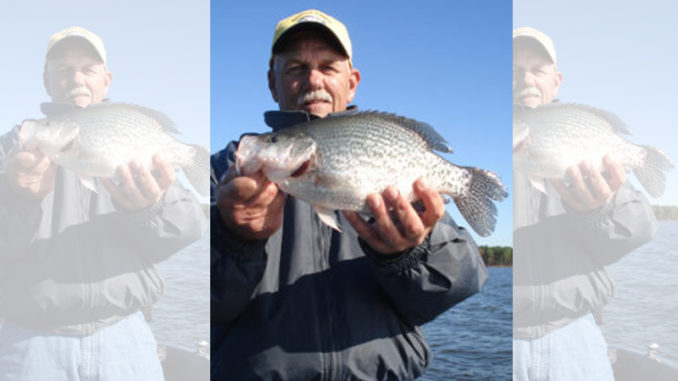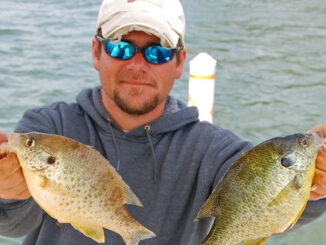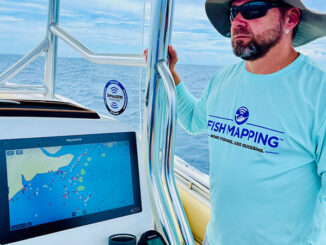
Understanding how crappie approach spawning areas
A key to catching plenty of crappie as spring progresses is to understand that slabs don’t approach their spawning areas “at an angle,” according to veteran angler Ed Duke of Concord, N.C.
Duke, a former tournament promoter who now manufactures Southern Crappie Rods, said crappie move horizontally into their shallow spawning areas from nearby flats. They find the depth that provides a comfortable water temperature and wait for the right moment. Then they move to the bank to drop their eggs.
“The biggest thing is, starting in late February and going through March, is never rule out a crappie being shallow,” said Duke (704-791-0108). “They won’t spawn until the water temperature is in the 60s. But they’ll get up on that flat and makes some false spawning runs.
“If a real cold front comes through, they may move back to deep water. But once they get on their spawning flat, they’ll stay there until it’s time.”
Duke said each reservoir has a “special” flat — or several — where crappie find all the perfect conditions for spawning. These areas are close to deep water, in the back of a creek or cove, a place where the current doesn’t come into play, and a place with a gravelly bottom.
“You’ve got to have that combination,” he said.
Crappie will find a comfort zone, then wait
When the days get longer in late February and the water starts to warm, crappie will pull up on those flats. They’ll find a comfort zone at a certain depth and set up shop there until the actual spawn begins.
“A rule of thumb is, if you’re catching them in 2 feet of water on the bank spawning, they’ll be 2 feet deep all over that flat. Even if they’re over 10 or 15 feet of water,” he said. “They’ll set up at a depth, and when everything gets right, they’ll move horizontally and go to the bank at that same depth. They don’t enter the spawn at an angle.”
Duke said many crappie will do the bulk of their actual spawning at night. They’ll move into the spawning area after sunset. And they’ll move back onto the flat as the sun rises, then go back in as needed.
That is one reason, he said, that long-lining with multiple rods and jigs is so productive during the spring. You can cover lots of water, determine the depth where most crappie are staging. Then you can work those areas with all of your lures at the right depth.
“Crappie don’t always spawn in 2 feet of water. The bigger ones may spawn out as deep as 10 feet,” he said.





Be the first to comment